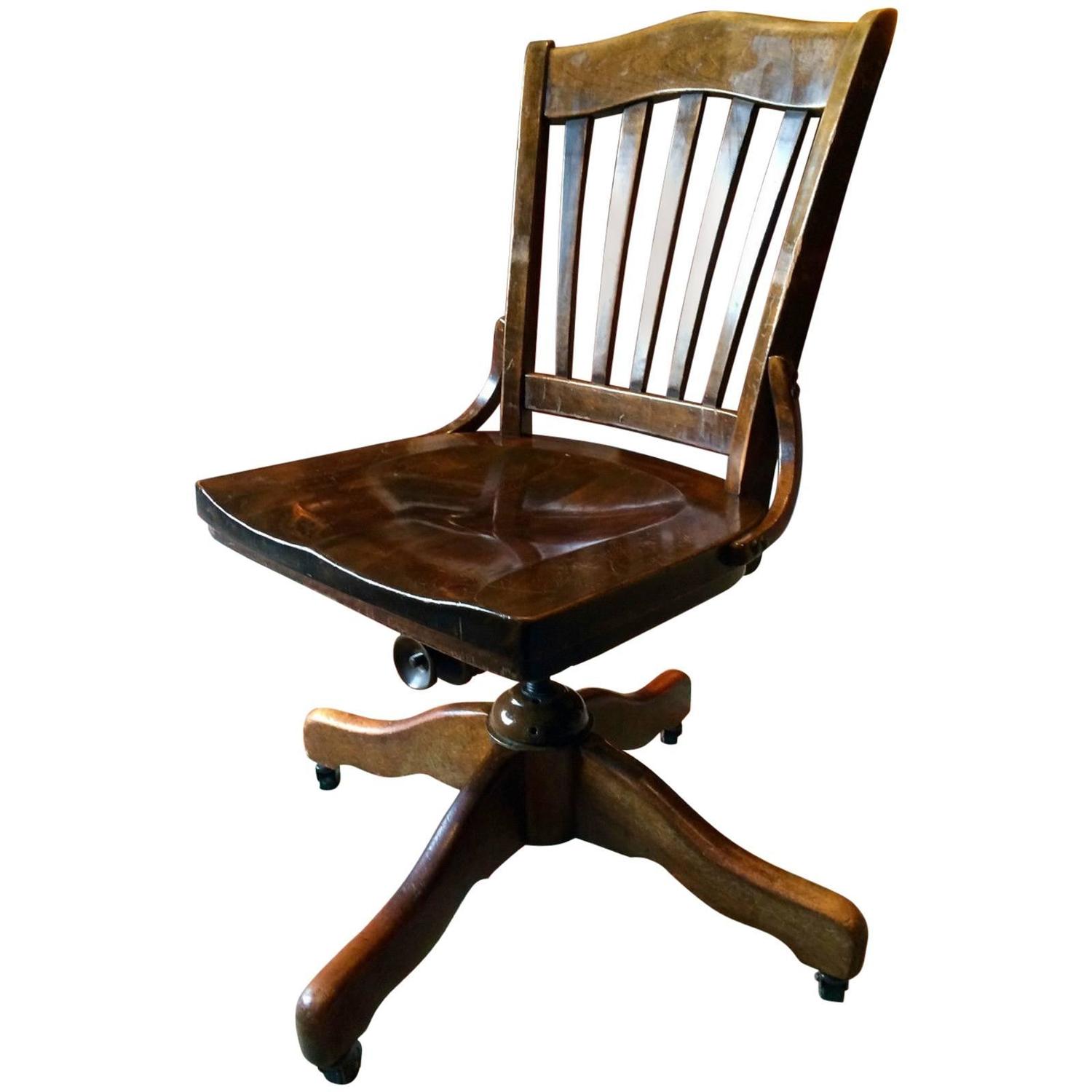Historical Context of Vintage Oak Desk Chairs

From the roaring twenties to the swinging sixties, and beyond, the vintage oak desk chair has been a steadfast companion to countless professionals, students, and home-office heroes. These chairs aren’t just furniture; they’re time capsules, whispering stories of bygone eras and reflecting the changing tastes and technologies of the 20th century. Their evolution mirrors the broader shifts in design philosophy, materials science, and manufacturing practices.
Evolution of Oak Desk Chair Design in the 20th Century, Vintage oak desk chair
The 20th century witnessed a dramatic evolution in oak desk chair design, reflecting broader societal changes and technological advancements. Early 20th-century designs often leaned towards a more ornate, Arts & Crafts style, emphasizing handcrafted details and natural wood finishes. Mid-century modern designs, in contrast, favored clean lines, functionality, and a streamlined aesthetic, often incorporating innovative materials and manufacturing techniques. Later in the century, a return to more traditional styles occurred, alongside the emergence of postmodern designs that blended different historical influences. This evolution is reflected not only in the chair’s form but also in its construction and the materials used.
Iconic Vintage Oak Desk Chair Designs
The following table highlights some iconic examples of vintage oak desk chairs and their associated designers or manufacturers. These chairs represent key stylistic periods and demonstrate the diversity of design approaches throughout the 20th century.
| Period | Design Style | Notable Features | Example Manufacturer |
|---|---|---|---|
| Early 20th Century (1900-1930s) | Arts & Crafts, Mission | Simple lines, handcrafted details, heavy oak construction, often featuring leather or fabric seats. | Stickley, Gustav Stickley |
| Mid-Century Modern (1930s-1960s) | Modernist, Streamlined | Clean lines, simple forms, often featuring molded plywood or bentwood elements, sometimes with metal accents. | Herman Miller, Knoll |
| Late 20th Century (1960s-2000) | Postmodern, Traditional Revival | A mix of styles, ranging from minimalist designs to reimagined traditional forms, often with a focus on comfort and ergonomics. | Various manufacturers, often featuring reproductions of earlier styles. |
Materials and Construction Techniques
Vintage oak desk chairs were typically constructed using solid oak, known for its durability and rich grain. Traditional joinery techniques, such as mortise and tenon, were commonly employed, ensuring strong and lasting construction. Seats were often upholstered in leather, fabric, or even woven rush, reflecting both the era’s aesthetic and the availability of materials. Modern manufacturing techniques often rely on less labor-intensive methods, such as mass-produced components and glued joints, resulting in chairs that may be less durable or possess less character. The use of veneers instead of solid wood is also common in modern production, offering a more cost-effective approach but sometimes at the expense of the chair’s overall longevity and aesthetic appeal. Think of it like this: a vintage oak desk chair is like a classic muscle car—built to last, with hand-crafted details that tell a story. A modern mass-produced chair is more like a modern economy car—functional, but lacking the same character and heirloom quality.
